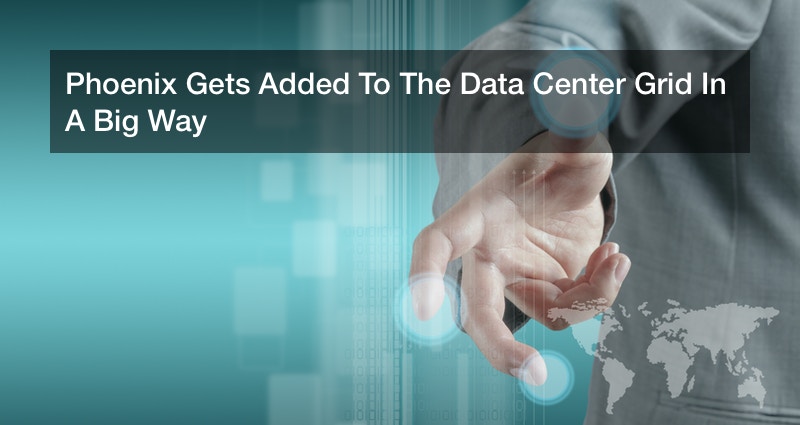Phoenix Gets Added To The Data Center Grid In A Big Way


The world is moving — quite seriously and quickly — toward a 5G future. Because traffic from wireless and mobile devices is estimated to account for more than 63% of total IP traffic by 2021, data centers across the country have been upgrading to meet the requirements that 5G speed will demand. Recently, Phoenix, AZ, has arisen as an ideal location for such advanced centers to build and expand.
Arizonian Advantages
Three companies have laid claim on the Copper State’s land in regards to data center development: Stream Data Centers, Vantage Data Centers, and Compass Datacenters. All of their campuses are expected to house enough data storage units to use 600 megawatts of power, meaning they’d be holding tens of thousands of servers. Arizona has become a prime location due to its lack of natural disasters, affordable land, and abundant and affordable power — not to mention the fact that its located on major fiber optic transmission lines which are vital to data center operations; to give you an example of what these cables are capable of, a single optical fiber can carry over 3,000,000 full-duplex voice calls or 90,000 TV channels.
“Due to the geography of the Western U.S., fiber coming out of California moving east goes through Phoenix, Las Vegas, and Reno (on to Salt Lake City),” said Robert Sty, global director, tech sector for HDR, an engineering firm in Phoenix. “Phoenix is a natural ‘node point’ for data centers given our population and location on the national network.”
At the same time, the city’s surrounding community has played a major role in encouraging its technological future. With the amount of value the U.S. has placed on our technological future, only those who embrace change and advancement will succeed as time continues.
“The local economic development community has done a great job in promoting Arizona has a high-tech corridor spurring growth in Information Technology,” Sty said. “Similar to how the federal highway system enhanced transportation decades ago, data centers and the fiber network is the infrastructure that supports these advanced platforms — everything from retail and business to self-driving vehicles, smart cities, and advanced manufacturing.”
The Helium Problem
However, nothing is guaranteed. Despite the fact that the U.S. is the number one largest supplier of helium in the world, we’re experiencing a global shortage. While this may sound like a problem exclusive to balloon manufacturers, helium is used a wide variety of industries and products — including fiber optic cables.
Although Phoenix is preparing for the 5G future, they may end up running out of the vital element before they’re able to meet expectations; as the second-biggest user of helium in the U.S., the data center industry is expected to boost the fiber optic connectors market significantly within the next few years.
Only time will tell how this newfound growth will be impacted by such a risky shortage. Though we (and the world) aren’t suffering from a critical loss yet, we may begin to experience the consequences of the helium shortage sooner than expected.


